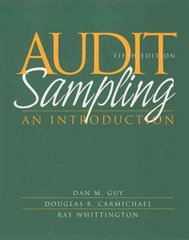Question
Since being elected in 2015, the Liberal government had vowed to change how employee stock options are taxed. On June 17, Finance Minister Bill Morneau
Since being elected in 2015, the Liberal government had vowed to change how employee stock options are taxed. On June 17, Finance Minister Bill Morneau released draft legislation for changes announced in the 2019 budget.
Stock options offer employees the right to acquire shares of their employer at a pre-determined price (called the exercise price) and for a set period. This alternative compensation method is particularly useful for startups and smaller, growing companies that may lack the cash flow to hire and retain talented employees. If the value of the shares increases above the exercise price, the employee may exercise the options and purchase the shares at the lower exercise price.
The current tax regime provides preferential tax treatment in the form of a stock option deduction. While there are no tax implications when the options are granted, there is a benefit at the time of exercise based on the difference between the fair market value (FMV) of the shares and the exercise price.
The timing of the stock option benefit income inclusion will depend on whether the corporation is a Canadian-controlled private corporation (CCPC) or a publicly traded company: the former offer a deferral until the shares are sold and the latter are taxable in the year of exercise. However, assuming certain conditions are met, a stock option deduction may be available on 50% of the stock option benefit, resulting in the employee being taxed at their personal rate on one-half of the income inclusion. While this income inclusion is not considered a capital gain (and, therefore, capital losses cannot be used to offset the stock option benefit), the stock option deduction provides employees with preferential, capital gains-like treatment.
The June proposals confirmed Finance's intent to limit the use of the stock option deduction to certain employers. The beneficial tax treatment will only be available on the exercise of the first $200,000 annual vesting limit, based on the FMV of the underlying shares on the date the options are granted and the number of options that vest in a particular calendar year.
The $200,000 limit won't apply to CCPCs or "start-ups, emerging or scale-up companies"the criteria for which have not yet been determined. Finance has asked for input by Sept. 16, so we likely won't have answers until late 2019 at the earliest. And with a federal election coming, it's uncertain whether a new government, if elected, would support this initiative.
Proposals in practice
Two case studies illustrate the potential implications for clients.
Kyle holds a senior position at a large public company whose shares are subject to the new rules. In 2020, Kyle's employer grants him stock options to acquire 100,000 shares at $40 per share, which represent the FMV at the time the options are granted. One-quarter of the options (25,000 shares) vest in each of 2021, 2022, 2023 and 2024. Since the shares' FMV at the time of grant for each vesting year exceeds $200,000 (25,000 x $40 = $1M), the preferential tax treatment will be capped. Specifically, the stock option benefit associated with 5,000 options ($200,000 / $40) in each vesting year will be eligible for the 50% stock option deduction. The remaining 20,000 options in each vesting year will be subject to the new regime and Kyle will owe tax on the benefit at his marginal rate.
Let's assume Kyle exercises all his options in 2024, when the stock price increases to $50 per share, and that Kyle is taxed at a 53% tax rate.Under existing rules, Kyle would trigger a stock option benefit of $10 per share ($50 - $40), or $1 million (100,000 x $10). A $500,000 stock option deduction (50% of the stock option benefit) will reduce Kyle's income inclusion, and he would only be taxable on the remaining $500,000 at his personal rate.His taxes payable would be $265,000(53% x $500,000).
Under the new rules, a stock option benefit of $200,000 would be eligible for a stock option deduction of $100,000, while the remaining stock option benefit of $800,000 ($10 x 80,000) would not be eligible for the deduction.Kyle's taxespayable in this scenariospike to $477,000.
Maria is an executive of a corporation subject to the new rules. On Jan. 15, 2020, her employer grants her options to acquire 10,000 shares at an exercise price of $25 per share, which is the FMV of the shares on that date. Options to acquire 2,500 shares vest in each of 2021, 2022, 2023 and 2024.The FMV of the shares for each vesting year is $62,500($25 x 2,500)below the $200,000 limit. As a result, Maria can claim the stock option deduction on all the options and benefit from paying capital gains-like tax rates.
If in 2024 the shares are $40 andMaria exercises all her options, she will trigger a stock option benefit of $150,000 ($15 x 10,000)and will be entitled to claim a $75,000 stock option deduction.
Required:
Provide an opinion between the existing and new rule for stocks option -
How is it good/bad for economy?
Who does it help?
Pros and cons of both of rule.
Use the case facts and provide the implications on individuals and economy.
Step by Step Solution
There are 3 Steps involved in it
Step: 1

Get Instant Access to Expert-Tailored Solutions
See step-by-step solutions with expert insights and AI powered tools for academic success
Step: 2

Step: 3

Ace Your Homework with AI
Get the answers you need in no time with our AI-driven, step-by-step assistance
Get Started


